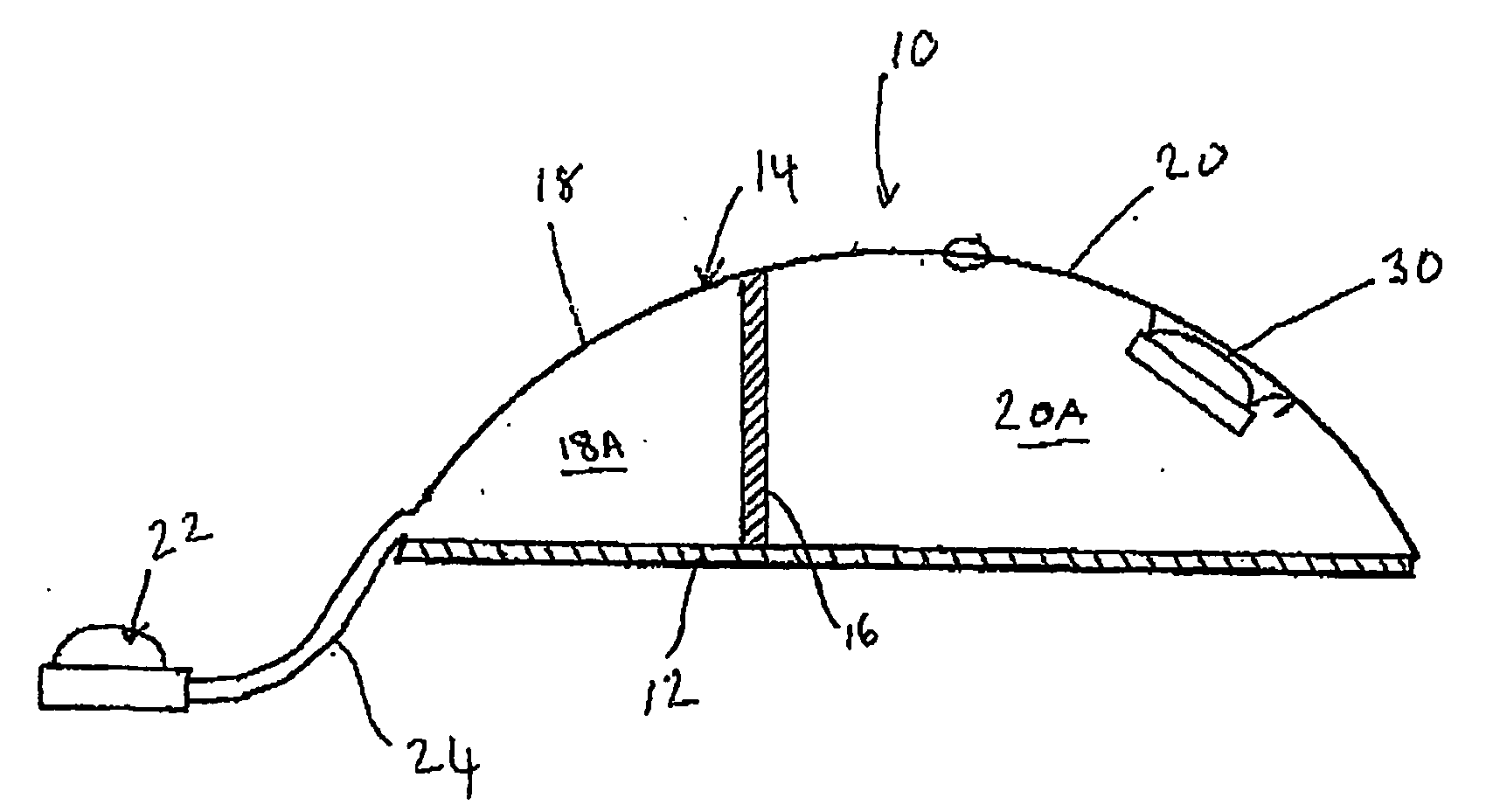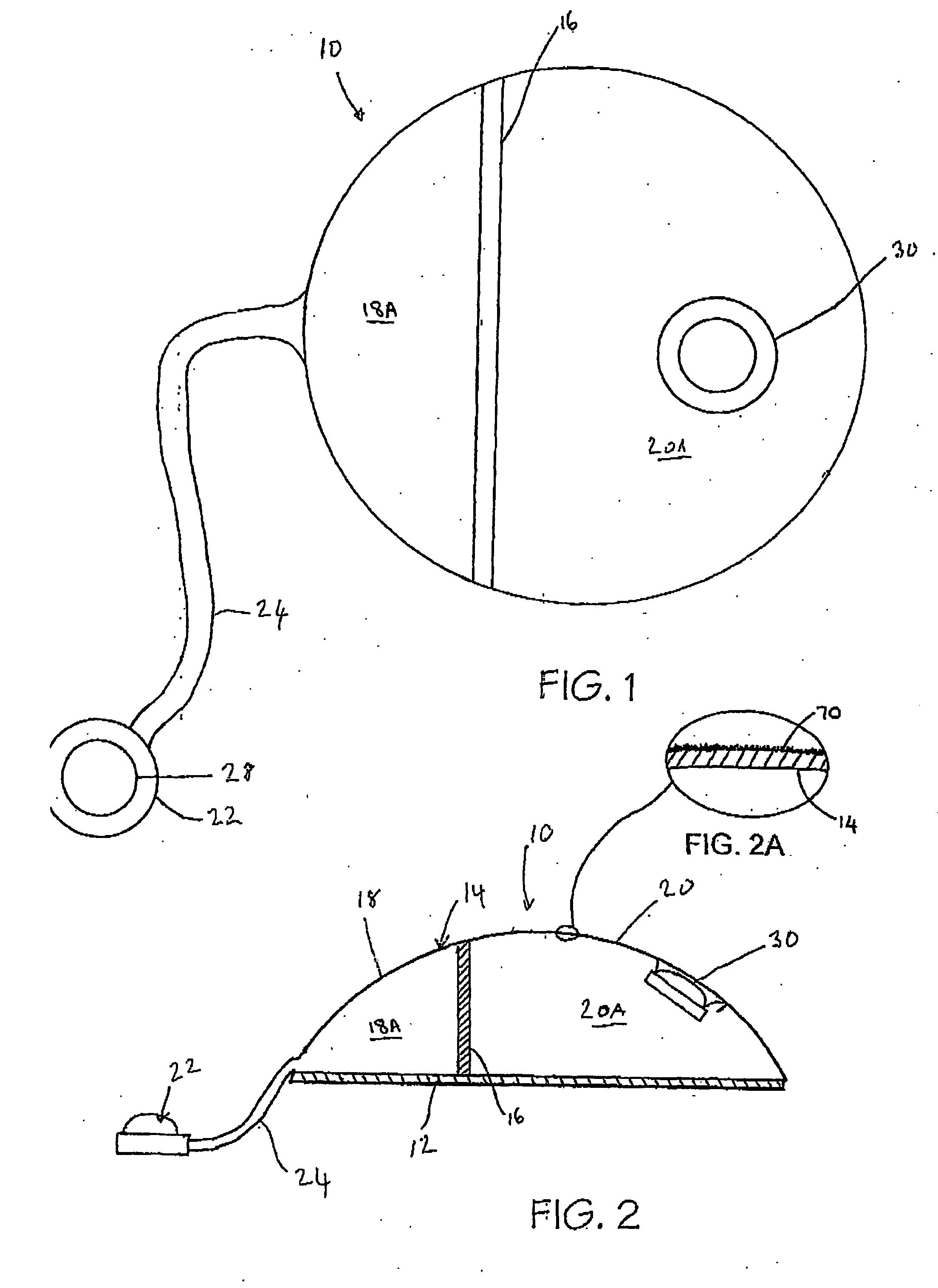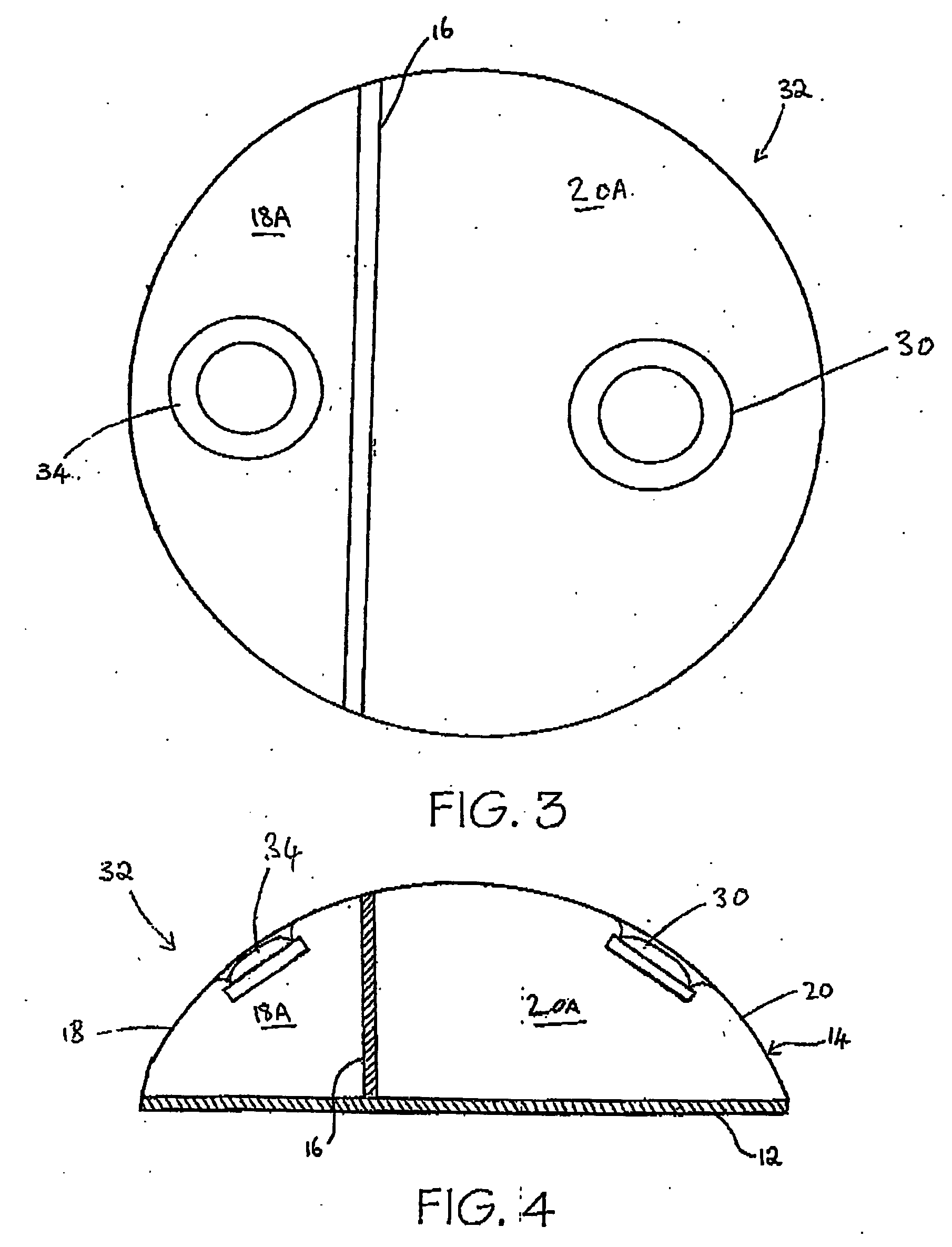Differential Tissue Expander Implant
a tissue expander and implant technology, applied in the field of differential tissue expander implants, can solve the problems of limiting sports activities, affecting the and affecting the quality of life of women with breast cancer
- Summary
- Abstract
- Description
- Claims
- Application Information
AI Technical Summary
Benefits of technology
Problems solved by technology
Method used
Image
Examples
first embodiment
[0095] Referring now to FIGS. 1 and 2, a tissue expander breast implant 10 comprises a base silicone wall 12 which is substantially circular in form. An outer domed wall 14 extends upwardly from the outer periphery of the base silicone wall 12, and is formed from an elastomeric silicone material. A laterally offset dividing wall 16 formed from a non-expandable silicone sheet extends upwardly at right angles from the base silicone wall 12 to the outer wall 14 so as to provide first or lateral and second or medial adjacent envelopes 18 and 20 defining respective first and second chambers 18A and 20A. A remote resealable injection valve or port 22 communicates with the chamber of the lateral envelope 18 via siloxane polymer tubing 24, and the medial envelope 20 is formed with an integral resealable injection valve or port 30. The remote valve 22 is in the form of a siloxane polymer dome having a posterior metal disc 28 to prevent needle perforation through the posterior aspect of the r...
fourth embodiment
[0112] It will also be appreciated that a differential tissue expander breast implant can be made in shapes which more realistically replicate the appearance of a natural breast. For example, a fourth embodiment, depicted in FIG. 7, is a tissue expander 39 formed with a teardrop-shaped base silicone wall 37. The dividing wall 33 and lateral envelope 35 also reflect the teardrop-shape, with the height of the dividing wall 33 and lateral envelope 35 increasing at the wider end of the base silicone wall 37. The tissue expander 39 is to be positioned in a patient so that the larger end of the tissue expander 39 forms the lower portion of a breast. These more biocompatible shapes will generally be the same as for the prior art.
[0113] In FIGS. 8 and 9, the tissue expander 10 of FIG. 1 is shown in position in a pocket beneath the right pectoralis major muscle 36 for reconstruction of the right breast 38. The left breast 40 and left NAC 42 are shown for comparison purposes, as is the previo...
PUM
 Login to View More
Login to View More Abstract
Description
Claims
Application Information
 Login to View More
Login to View More - R&D
- Intellectual Property
- Life Sciences
- Materials
- Tech Scout
- Unparalleled Data Quality
- Higher Quality Content
- 60% Fewer Hallucinations
Browse by: Latest US Patents, China's latest patents, Technical Efficacy Thesaurus, Application Domain, Technology Topic, Popular Technical Reports.
© 2025 PatSnap. All rights reserved.Legal|Privacy policy|Modern Slavery Act Transparency Statement|Sitemap|About US| Contact US: help@patsnap.com



